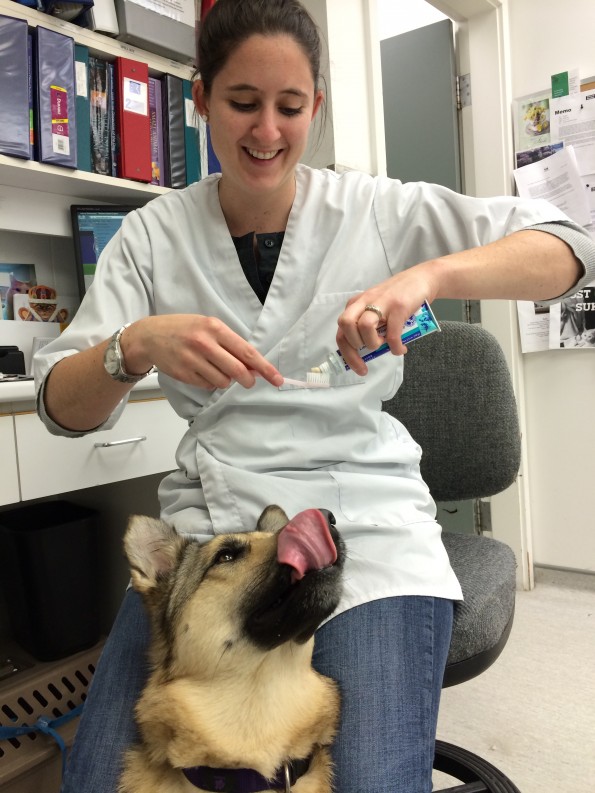We know by now how important oral health is for our pets. Daily brushing is the best way to prevent against tartar and gum disease. The idea of brushing your pets teeth may be a bit daunting at first, but with a little bit of patience, brushing can be a beneficial and positive activity for both you and your pet. Dr. Beneke and her dog Kinley demonstrate.
GET COMFORTABLE
Getting your pet used to brushing may take several sessions, be patient and keep things positive. Start slow and reward your pet during the process. Practice lifting their lips and looking at their teeth; get them used to having your fingers in their mouths and along their gums.
Start by introducing them to the toothpaste, put a small amount on your finger and rub it on their gums. Ensure you use toothpaste designed for your pet that does not contain fluoride, does not foam and can be safely swallowed. We recommend CET enzymatic toothpaste. There are many different flavors available.
WORK YOUR WAY TO A TOOTHBRUSH
Once your pet has become accustomed to the toothpaste and a finger in their mouth, wrap a piece of moist gauze around your finger and apply toothpaste on that. Then brush your pet’s teeth with your gauze wrapped finger.
Finally graduate to a toothbrush that is appropriately sized for your pet’s mouth. There are various styles that are found at veterinary hospitals. For most dogs, a toddler sized toothbrush from the pharmacy will work well.
BRUSHING
Brush teeth and gums gently, focusing on the outside of the teeth (the surface facing the cheeks). The outer surface is most prone to tartar buildup. Don’t forget to work slowly and to offer lots of praise.
Points to remember:
– Daily brushing is the goal but anything is better than nothing.
– You will likely only be able to brush the outside surface of the teeth, not the tongue side. Luckily tartar builds up more slowly on the tongue side in most pets.
– Don’t forget the front teeth and the back molars.
– Always reward your pet with praise and a treat after each brush







